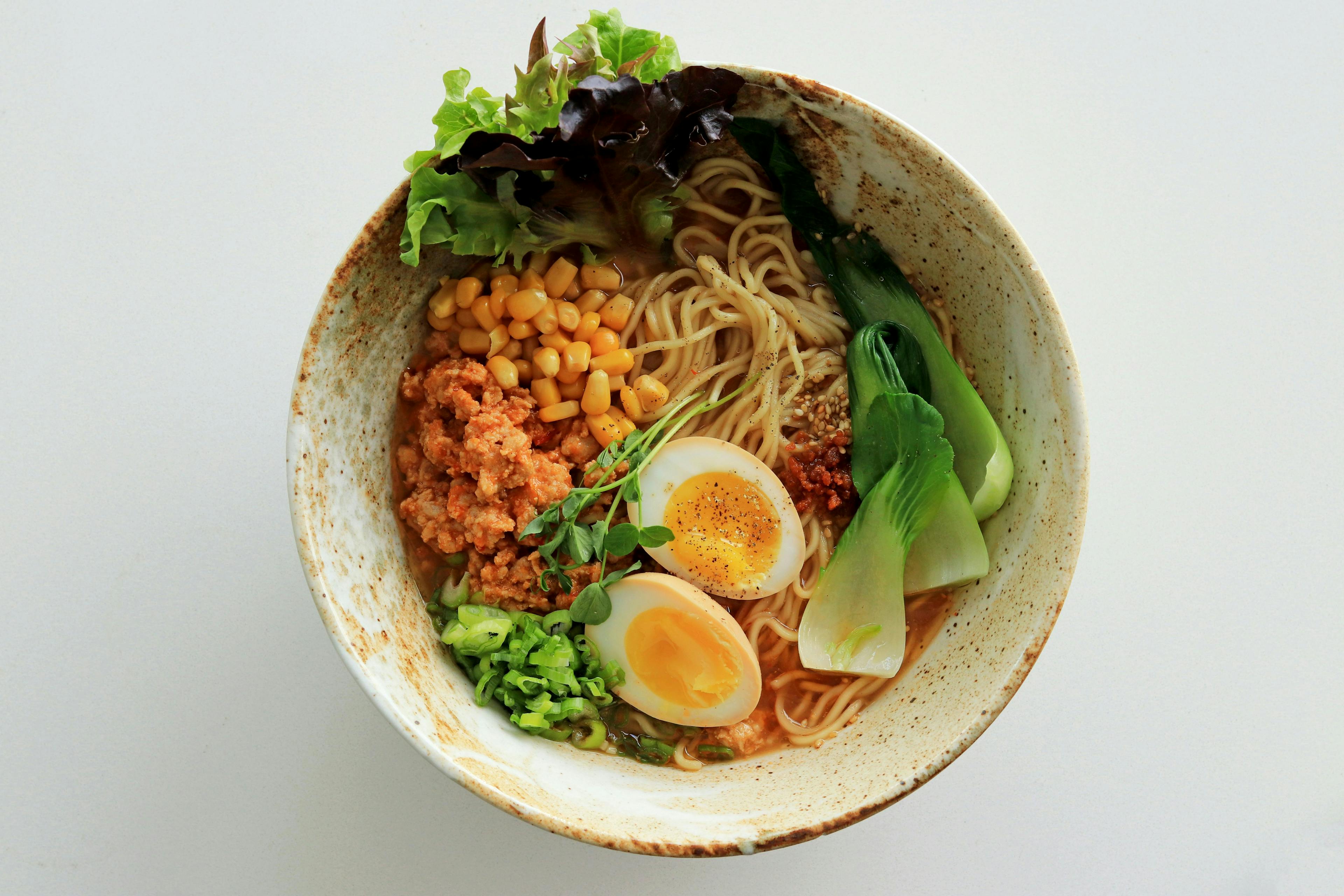your cart
Your cart is empty.
Recipes
General Articles
A Guide to the Most Popular Types of Japanese Noodles

Most noodles are thought to have originated in China, but they’ve been a central part of Japanese cuisine and culture for centuries. Japanese noodles are a staple in countless regional dishes, offering a variety of flavours, textures and culinary experiences – this means there are plenty of different types of noodles for foodies to get their heads around.
From ramen to udon, start exploring the wide world of Japanese noodles and all the best dishes they’re incorporated into!
What are the Different Types of Japanese Noodles?
First things first, which noodles are Japanese? While the basic noodle may originate from China, Japan has certainly made particular noodles its own, with several types of Japanese noodles becoming almost integral to the country’s global image. Popular types include:
- Ramen
- Udon
- Soba
- Yakisoba
- Sōmen
- Hiyamugi
- Harusame
- Shirataki
1. Ramen Noodles

No surprises here; ramen is one of the most popular and widely-known Japanese noodle types in and out of the country. These commonly wheat-based noodles tend to be long and thin, usually dried in blocks to create instant ramen noodle packets that are known for being a quick, easy and tasty snack.
Ramen is usually served in some kind of broth with an array of toppings like chashu pork, boiled eggs, seaweed, tofu and much more. To find out more about upgrading your ramen, see our guide to the best Japanese ramen toppings.
2. Japanese Udon Noodles

Japanese udon noodles are much thicker than ramen and have a softer, chewy texture. They are made from wheat flour and have a more substantial bulk than other kinds of noodles.
Udon is most commonly used in hot soup recipes and is incorporated into many comfort dishes. One of the most popular udon-based dishes is kitsune udon, which is topped with deep-fried bean curd slices.
3. Soba Noodles

These noodles are brown in colour and have a slightly earthier taste than ramen or udon. Soba noodles are made out of buckwheat, with ‘soba’ actually translating to buckwheat in Japanese.
They are frequently used in cold dishes or noodle salads accompanied by a dipping sauce. However, their versatility means they can also be used in a hot broth for delicious results.
4. Yakisoba Noodles

Despite the name, these are not buckwheat noodles and are instead made with wheat flour. Like ramen, they are long and thin and are used in yakisoba stir-fry dishes. They are commonly flavoured with Worcestershire or barbeque-flavoured sauces and accompanied by things like pork, shredded cabbage and bean sprouts.
In Japan, you’ll see plenty of street food vendors serving up devious servings of yakisoba.
5. Sōmen Noodles

Perhaps less well-known in the west, these very thin noodles are usually served cold with a tsuyu dipping sauce. Sōmen noodles are popular in the summer because they can help you stay cool.
When the weather is hot, some restaurants will serve these noodles by placing them in a bamboo flume that travels around the diners, who then pluck the noodles from the flowing water with their chopsticks. This serving method is called nagashi-sōmen, which translates to ‘flowing noodles’.
6. Hiyamugi Noodles

Another less well-known noodle variation, hiyamugi noodles are often considered to be halfway between udon and sōmen in terms of thickness and the similarity regarding the dishes they’re used in.
Like sōmen, hiyamugi noodles are popular in cold noodle dishes served with a dipping sauce. Sometimes, you will get a few pink, green or brown noodles among a batch of white ones for a more visually interesting dish.
7. Harusame Noodles

‘Harusame’ translates to ‘spring rain’, a name that reflects the transparent, almost watery appearance of the noodles. You may also see harusame noodles referred to as glass noodles for this reason.
They are made out of potato or mung bean starch and tend to be incorporated into soups, hot pots and salads. Harusame noodles are also often used as a filling in spring rolls.
8. Shirataki Noodles

Made from konjac yam, shirataki noodles are also thin and translucent, with the name translating as ‘white waterfall’. Due to the fact that they are high in fibre yet contain very few calories, they are popular with people seeking low-calorie meals.
Shirataki noodles tend to get used to bulk out and add texture to soups, stews and stir-fries.
Are Japanese Noodles Gluten-Free?
As many noodles are made using wheat, a lot of them do contain gluten. However, as we’ve seen above, not all Japanese noodles are wheat-based. Gluten-free noodles may include:
- Soba noodles
- Harasume/glass noodles
- Shirataki noodles
Although these noodles do not tend to contain wheat, it may still be worth checking those you buy are labelled specifically as gluten-free. Discover more information about which noodles are gluten-free with our guide.

The Best Japanese Noodle Dishes
Now, the only thing left to do with all this noodle knowledge is to experiment with different tasty Japanese dishes!
We’ve already highlighted a couple of the common ways each of these noodles is enjoyed, but there are endless possibilities and ways to adapt different traditional noodle recipes. Just a couple include:
- Kake udon – light and simple noodle soup.
- Yaki udon – udon noodle stir-fry.
- Tonkotsu ramen – iconic ramen with tasty pork toppings.
- Miso ramen – ramen in an umami miso broth.
- Hyashi Chuka – cold noodles served with a refreshing dressing and colourful toppings.
- Tempura soba – noodles in broth served with tempura fried shrimp.
- Zaru soba – cold soba noodles with a dipping sauce.
- Nyumen – hot sōmen noodle soup.
There are, of course, all manner of ramen dishes, stir-fries and Japanese soups that make use of all the noodles we’ve covered here. We have a range of great recipes that show how versatile and tasty the simple noodle can be!
Why not check out our recipe for udon noodles and puffed tofu to continue your journey into Japanese noodles?
And if you want to stock up on any noodles or Japanese treats, you can browse our online Japanese grocery store to find everything you need.
this site uses cookies
We and our advertising partners use cookies on this site and around the web to improve your website experience and provide you with personalised advertising from this site and other advertisers. By clicking allow, you accept the placement and use of these cookies for these purposes. Learn More



